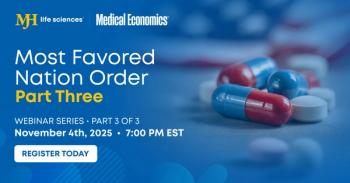
Can AI-enabled medical charting increase revenue?
Key Takeaways
- AI-enabled scribing solutions reduce documentation time by up to 30%, allowing physicians to focus more on patient care and see more patients.
- Effective AI documentation solutions should offer conversational speech recognition, fast and accurate clinical notes, and customization for specialties.
With so many AI solutions, how can physicians sort through the offerings to determine what will work best for their practice?
Artificial intelligence (AI)
HCPs who utilize AI-enabled medical scribing solutions during and after patient visits are finding the speed and convenience of AI-generated clinical notes can help them better manage their time and resources. Others are holding off, resistant to change and concerned about AI privacy issues.
With so many companies touting their own solutions, how can HCPs sort through the myriad offerings to determine what will work best for their practice, group, or health system?
Utilizing AI to Streamline Healthcare Documentation
AI-enabled medical scribing uses advanced machine learning algorithms, which are ideally customized through repetition and training to meet practice needs and streamline healthcare documentation. These systems transcribe physician-patient interactions in real-time, accurately capturing all pertinent details and automatically populating electronic health records (EHRs).
According to a study published in the Journal of Medical Systems, implementing AI scribes can reduce documentation time by up to 30%. This allows physicians to focus more on direct patient care, see more patients in less time, and stop charting after hours.
Understanding the benefits, and the potential levels of practice integration, can help providers determine how to best utilize AI technology. A robust AI documentation solution should accomplish the following:
- Conversational speech recognition – Recognize and accurately transcribe natural, conversational speaking styles, different dialects and languages, including Spanish.
- Fast, accurate, clinical notes – The best AI solutions should be able to produces a 90%+ accurate SOAP note within 20-30 seconds.
- Easy, intuitive user interface – Fewer clicks mean faster output.
- Improved accuracy over time –
AI can be trained by transcribing practice sessions before going live, and by utilizing editing functions that introduce frequently used words and phrases and increase speed and accuracy over time. - Customization to accommodate specialties – One size doesn't fit all; consider solutions that can be set up and supported to recognize specialty terms, phrases, prescriptions, procedures, and other unique needs.
Choosing the Right AI Support Level
Finding an AI scribing solution that works best for a practice depends on a clinical team's comfort level with technology, ability to integrate processes that support current practices, and the willingness to try new approaches. AI can help with charting documentation at various levels.
· Real time - Some AI charting solutions automatically create patient encounter notes (SOAPs) after a visit that can be reviewed immediately, revised if necessary, and uploaded to any electronic medical record (EMR).
· Post Visit – Notes dictated after a patient’s visit can also be stored and processed securely on a HIPPA-compliant cloud. A trained medical scribe can later refine AI-generated content, make corrections, and have notes ready for review, sign-off, and integration into the EMR quickly.
· Hybrid Live Scribe/AI - A trained medical scribe can review AI-generated notes ─ stored securely on a HIPAA-compliant cloud ─ edit, and then input them into any EMR for sign off within hours.
Integrating AI Into Workflow to Increase Revenue and Reduce Burnout
Many large healthcare networks and single office practices are already utilizing in-person or virtual human scribes to document patient visits and prepare charts for sign off. These scribes listen in on patient visits, record detailed notes, and chart in the EHR in real time, allowing physicians to focus entirely on the patient.
Enhancing scribing with AI-enabled documentation can speed data entry during the patient visit, instantly producing a high quality, accurate chart that enables the physician to focus more on the exam or consultation.
A report from the American Medical Association (AMA) indicates that physicians utilizing AI scribes can see up to 20% more patients per day. If a physician can see four additional patients daily, and each patient visit generates an average of $150, this results in an additional $600 in revenue per day. Over a year, this equates to approximately $144,000 in increased revenue, demonstrating the substantial financial benefits of AI-enabled scribes.
Lastly, there is the staggering cost of burnout. The Annals of Internal Medicine published a study showing that work-related healthcare provider burnout costs the U.S. healthcare system approximately $4.6 billion annually. Real-time AI scribing alleviates the heavy burden of increased documentation requirements, which significantly reduces provider burnout.
Terry Ciesla is senior vice president of
Newsletter
Stay informed and empowered with Medical Economics enewsletter, delivering expert insights, financial strategies, practice management tips and technology trends — tailored for today’s physicians.


















